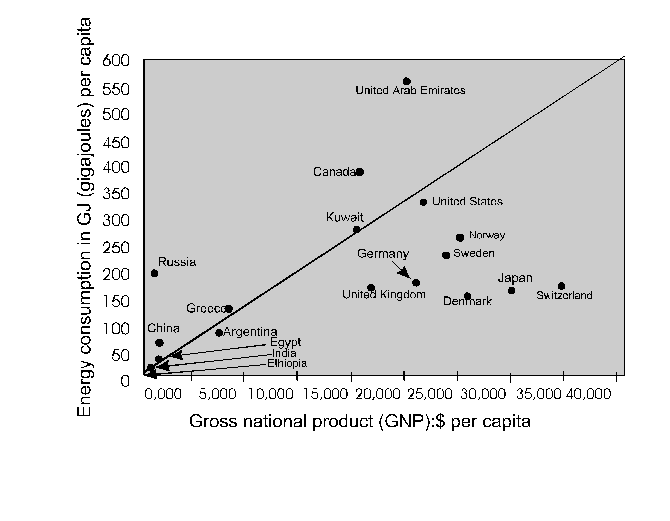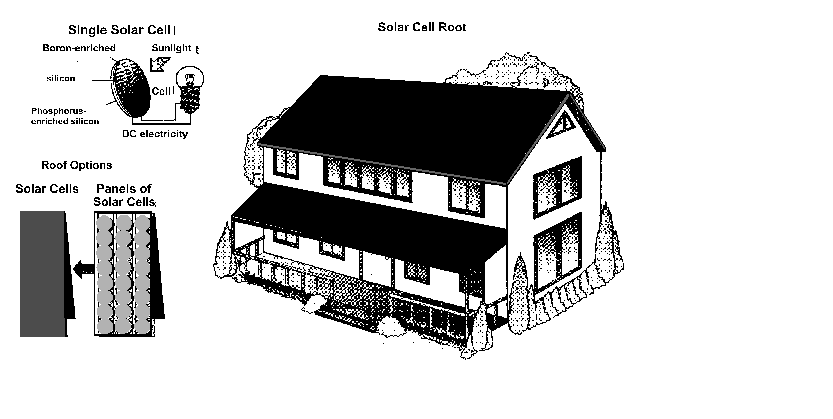
- •О. Л. Добрынина energy
- •Unit 1 environmental problems on the earth
- •Reading comprehension
- •Language study
- •1.2.4. Describe the rate and size of change observed:
- •1.2.5. What trends in the environment have been pointed out recently?
- •Prefixes
- •Discussion
- •Unit 2 laws of energy
- •Reading comprehension
- •Some useful information Energy units
- •Language study
- •Discussion
- •Unit 3 resources What keeps us alive?
- •What types of energy do we use?
- •Reading comprehension
- •Language study
- •Энергоресурсы
- •Discussion
- •Improving energy efficiency
- •How can we save energy?
- •Reading comprehension
- •Language study
- •2/3, 3/8, 1/5, 5/8, 1/10, 1/20, 3/10, 1/3, 3/5, 7/8.
- •Discussion
- •Unit 5 using solar energy to provide heat and electricity
- •Reading comprehension
- •Language study
- •The infinitive
- •Discussion
- •Unit 6 hydropower and wind energy
- •Reading comprehension
- •Language study
- •Discussion
- •Reading comprehension.
- •Language study.
- •The Modal Verbs and Their Equivalents
- •Discussion
- •Unit 8 nuclear energy
- •Reading comprehension
- •Language study
- •The Participle
- •Practice
- •Discussion
- •Unit 9 solutions: a sustainable energy strategy
- •Reading comprehension
- •Language study
- •The Gerund
- •Discussion
- •Unit 10 energy crisis
- •International conference
- •Reading comprehension
- •Discussion
- •Role play: the nuclear debate
- •Glossary
- •Main sources of information
- •185910, Г. Петрозаводск, пр. Ленина, 33
Discussion
Exercise 4.7
What are the most important things an individual can do to save energy? Which, if any, do you currently do? Which, if any, do you plan to do?
What can be done to save energy in buildings? What is being done currently to save energy in the houses? What do you personally do to insulate your flat?
Is it necessary to build super insulated houses in Karelia? What are the pros and cons of such houses?
List some reasons why there is so little emphasis on saving energy in Russia, despite its important benefits.
How can using Internet help save energy and paper and reduce global warming?
What can be done to save energy in transportation?
For ideas: a) manufacture cars with fuel efficiency of 30 60 kilometers per liter, b) use more energy-efficient ways to move people and freight, c) manufacture highly efficient cars with a small hybrid electric-internal combustion engine or cars with fuel cells, (which are 50 60% efficient compared to 10 14% efficiency for gasoline-powered vehicles), some are fueled by methanol, a liquid usually produced from natural gas, some by hydrogen produced directly from natural gas, gasoline or diesel fuel, d) use electric bicycles with speed up to 30 km per hour, e) use conventional bicycles, f) walk more.
Analyze the information presented in the following chart. How much energy do some countries use and what standard of living do they maintain? Compare the GNP and energy consumption in Russia and Germany, Sweden, Norway, Japan. Does the higher energy use always correlate with a higher standard of living? Why do we have the opposite situation in Russia? What should be done to improve the situation?

Per capita energy use and gross national product. In general, higher energy use correlates with a higher standard of living. Denmark and Switzerland, however, use about half as much energy as the United States does and have a higher standard of living by most measures.
Unit 5 using solar energy to provide heat and electricity
In 1994 Shell International Petroleum in London projected that renewable energy (especially using wind and solar cells to produce electricity and to produce hydrogen for fuel cells) could account for 50% of world energy production by 2050. Like fossil fuels and nuclear power, each renewable energy alternative has a mix of advantages and disadvantages. Major advantages are: 1) save money (wind), 2) reduce air pollution (99% less than coal), 3) greatly reduce CO2 emissions, 4) last as long as coal and nuclear plant 30 40 years, 5) land use less than for coal. But at the same time there are some disadvantages: 1) making solar cells produces toxic chemicals, 2) take large amounts of land because of diffuse nature of sunlight, 3) can damage fragile desert ecosystems used to collect solar energy, 4) need backup systems during cloudy and rainy weather.
How can we use solar energy to heat houses and water? Buildings and water can be heated by solar energy using two methods: passive and active. A passive solar heating system absorbs and stores heat from the sun directly. Energy-sufficient windows, greenhouses and sunspaces face the sun to collect solar energy by direct gain. Walls and floors of concrete, brick, stone, salt-treated timber and water in drums store much of the collected solar energy as heat and release it slowly throughout the day and night. A small backup heating system such as a vented natural gas or propane heater may be used but is not necessary in many climates.
There are several versions of a solar envelope house, the front and back of this house are double walls of heavy timber impregnated with salt to increase the wood’s ability to store heat. The space between the two walls and the basement forms a convection loop or envelope around the inner shall of the house. In summer roof vents release heated air from the convection loop throughout the day; at night, these roof vents, with the air of a fan, draw air in the loop, passively cooling the house. The interior temperature of the house typically stays within 2 of 21 C year-round without any conventional cooling or heating system. In cold and cloudy climates, a small wood stove or vented natural gas heater can be used as a backup to heat the air in the convection loop.
On a life cycle cost basis, good passive solar and super insulated design is the cheapest way to heat a small buildings in regions where ample sunlight is available during daytime. Such a system usually adds 5 10% to the construction cost, but the life cycle cost of operating such a house is 30 40% lower. The typical payback time for passive solar features is 3 7-years.
In the active solar heating system, collectors absorb solar energy and a fan or a pump supplies part of a building’s space-heating or water-heating needs. Several connected collectors are usually mounted on the roof with an unobstructed exposure to the sun. Some of the heat can be used directly, and the rest can be stored in insulated tanks containing rocks, water, or a heat-absorbing chemical for release as needed. Active solar collectors can also supply hot water.
How can we use solar energy to generate high-temperature heat and electricity? Several so-called solar thermal systems collect and transform radiant energy from the sun into high-temperature thermal energy (heat), which can be used directly or converted to electricity. In a power tower, huge arrays of computer-controlled mirrors called heliostats track the sun and focus sunlight on a central heat collection tower. Such system began operating in 1996 in California desert but was shut down because the electricity produced was about twice the cost of a coal-fired plant. In a solar thermal plant or distributed receiver system, sunlight is collected and focused on oil-filled pipes running through the middle of curved solar collectors. This concentrated sunlight can generate temperatures high enough for industrial processes or for producing steam to run turbines and generate electricity. In California desert such system with a natural gas turbine backup system produced power much more cheaply than nuclear power plants. Another type of distributed receiver system uses parabolic dish collectors (which look somewhat like TV satellite dishes) instead of parabolic troughs. These collectors can track the sun along two axes and generally are more efficient than troughs. A pilot plant is being built in northern Australia. Another approach for intensifying incoming solar energy about 80,000 times is an optical solar concentrator. Because of their high efficiency and ability to generate extremely high temperatures, these concentrators may make solar energy practical for widespread industrial and commercial use within 10 20 years. Inexpensive solar cookers can focus and concentrate sunlight and cook food, especially in rural villages in sunny developing countries.
Solar energy can be converted directly into electrical energy by photovoltaic (PV) cells, commonly called solar cells. A solar cell is a transparent wafer that contains a semiconductor material with a thickness ranging from less than that of a human hair to that of a sheet of paper. Sunlight energizes and causes electrons in the semiconductor to flow, creating an electrical current.
Because a single solar cell produces only a tiny amount of electricity, many cells are wired together in modular panels to produce the amount of electricity needed. The direct current (DC) electricity produced can be stored in batteries and used directly or converted to conventional alternating-current (AC) electricity by a separate inverter or an inverter built into the cells.

Photovoltaic (solar) cells can provide electricity for a house or building using new solar-cell roof shingles or PV panel roof systems that look like metal roofs. Small and easy expandable arrays of such cells can provide electricity fur urban villages throughout the world without large power plants or power lines. Large banks of such cells can also produce electricity at a small power plant for direct use or for converting water to hydrogen fuel. As the price of such electricity drops, usage is expected to increase dramatically.
Traditional-looking solar-cell roof shingles and photovoltaic panels that resemble metal roofs are now available. A German company is now testing a solar-electric window that incorporates solar cells into a semitransparent glazing that simultaneously generates electricity and provides filtered light during daylight hours. Researches are developing improved deep-cycle batteries and super capacitors to store solar power for later use as needed. One promising system is to 1) use rooftop solar cells to produce hydrogen when the sun is shining, 2) store the hydrogen and 3) use it in a fuel cell to provide electricity and heat as needed.
Solar cells are an ideal technology for providing electricity to 2 billion people in rural areas in most developing countries who have no electricity. With financing from the World Bank, India is installing solar-cell systems in 38.000 villages. Analysts project that solar cells could supply 17% of the world’s electricity by 2020 as much as nuclear power does today at a lower cost and much lower risk and 25% by 2050. If such projections are correct, the production, sale and installation of solar cells (already a $25-billion-per-year business) could become one of the world’s largest and fastest-growing businesses.
